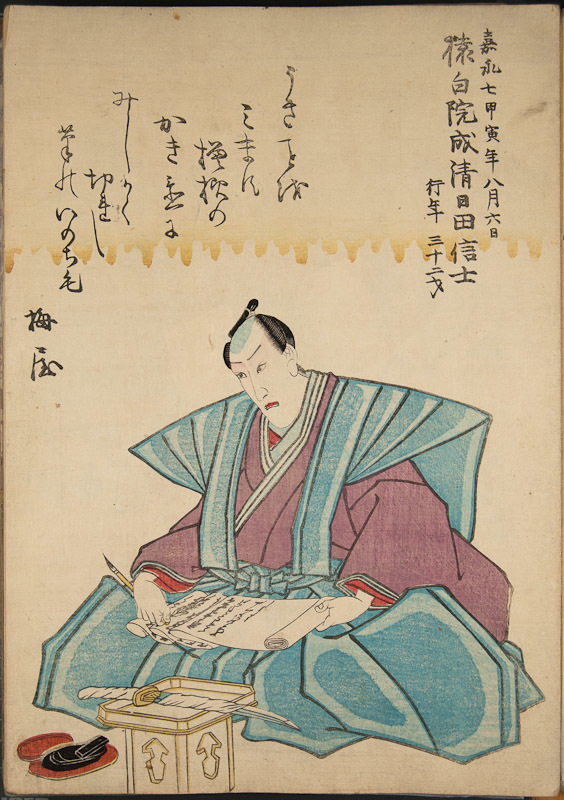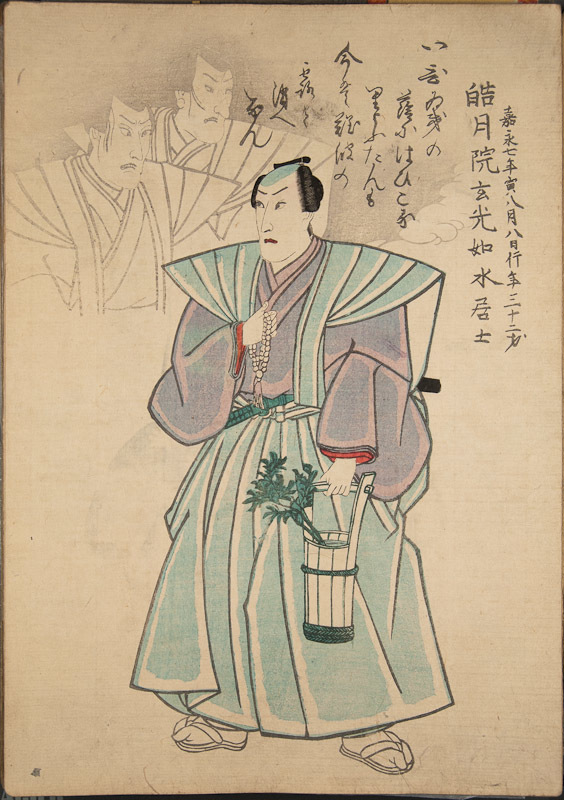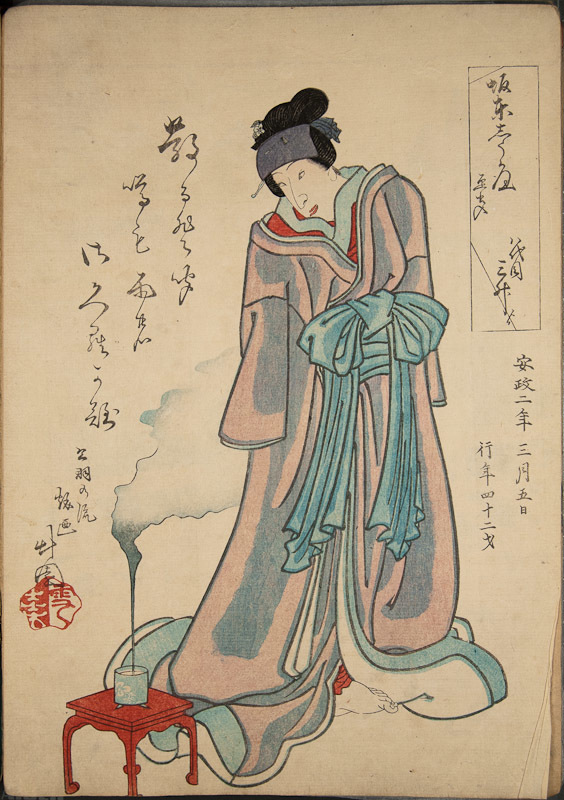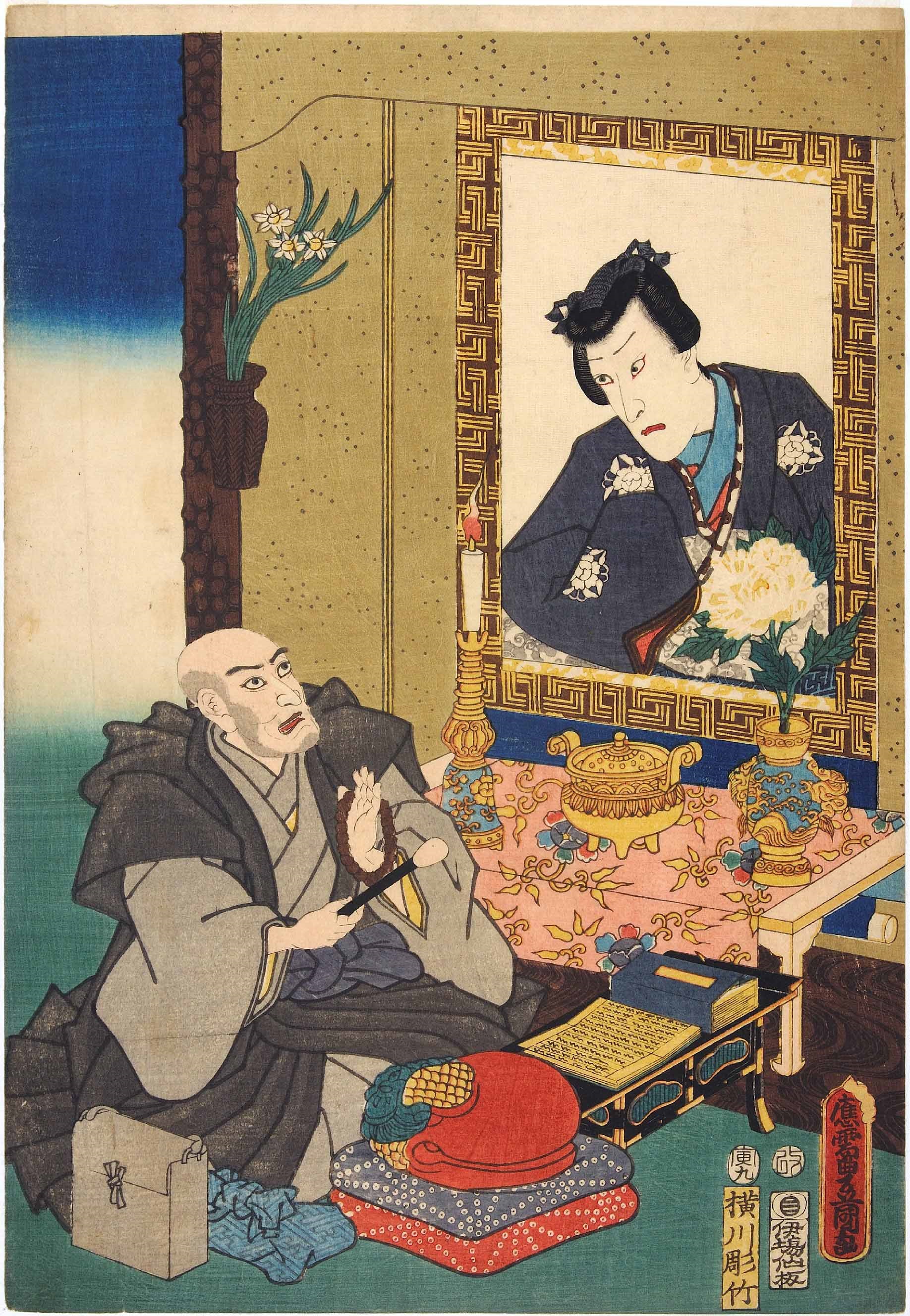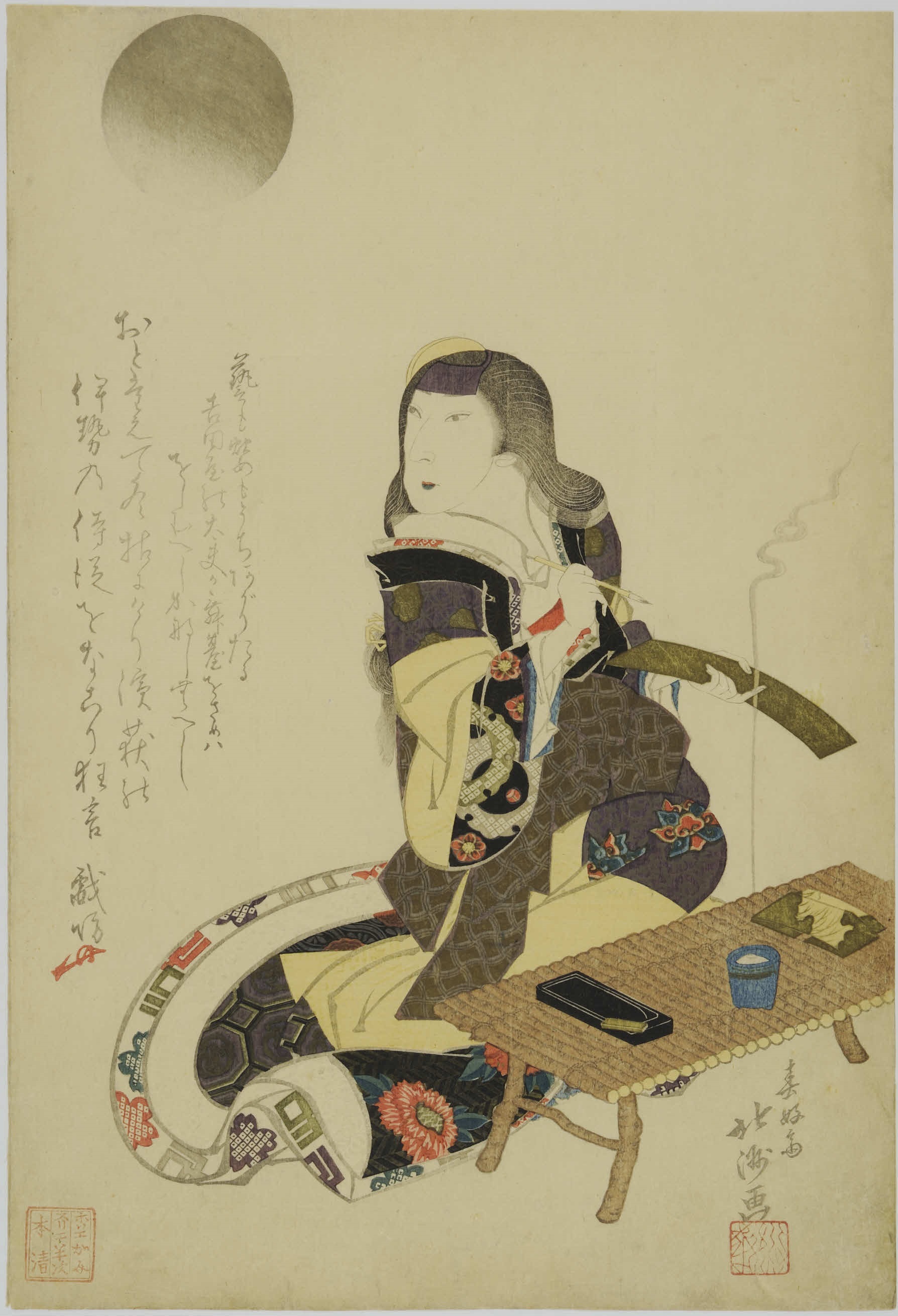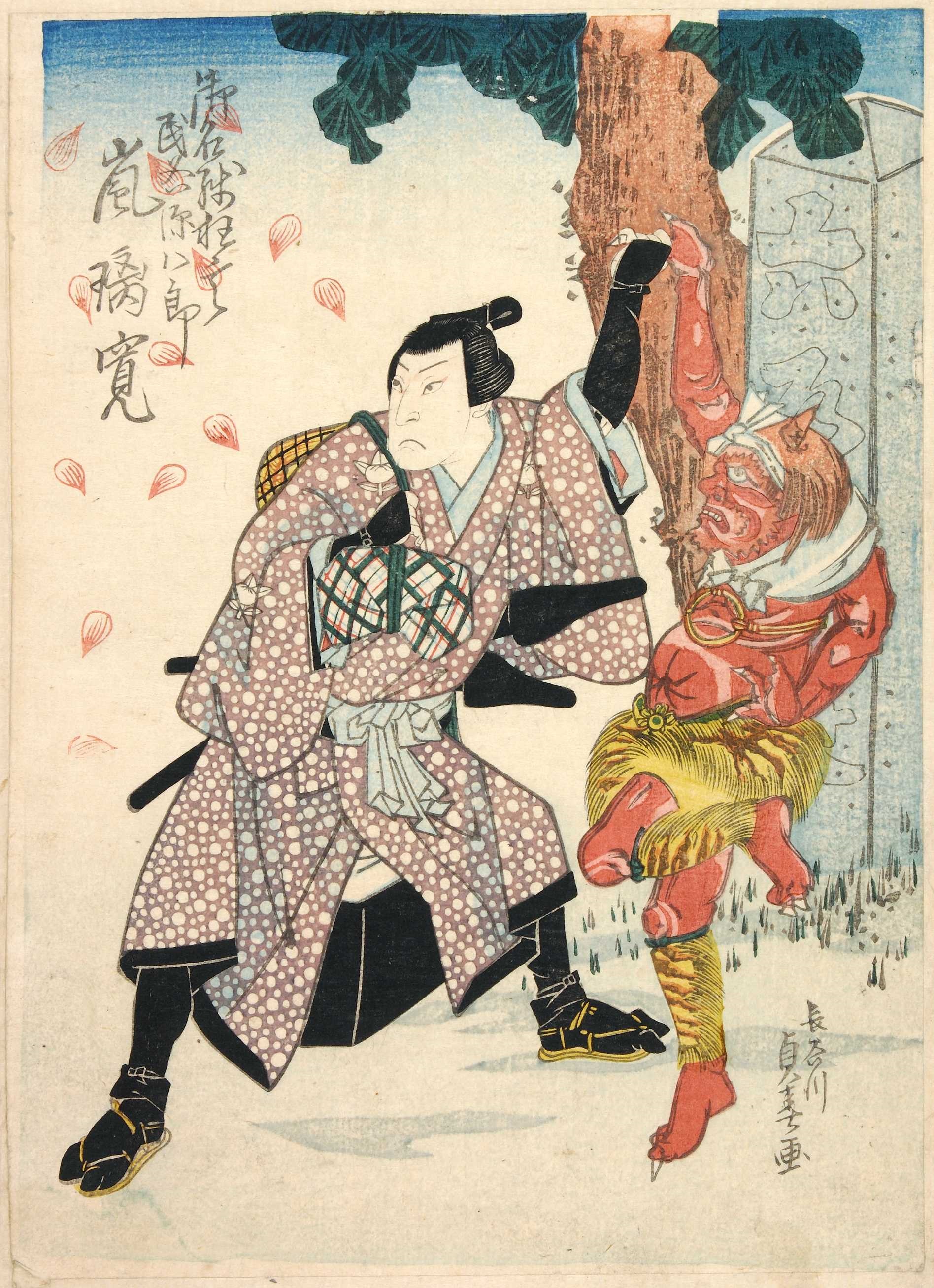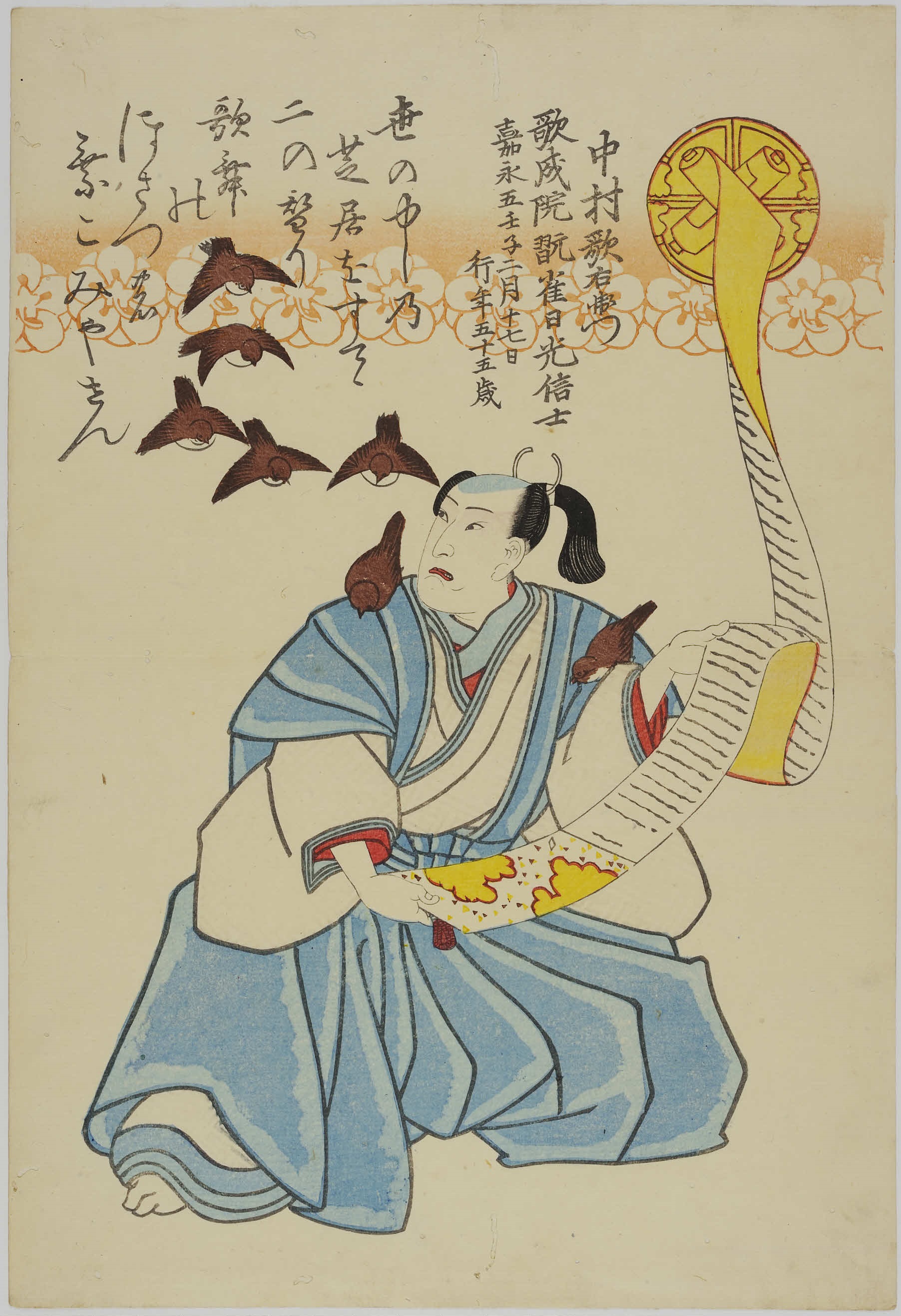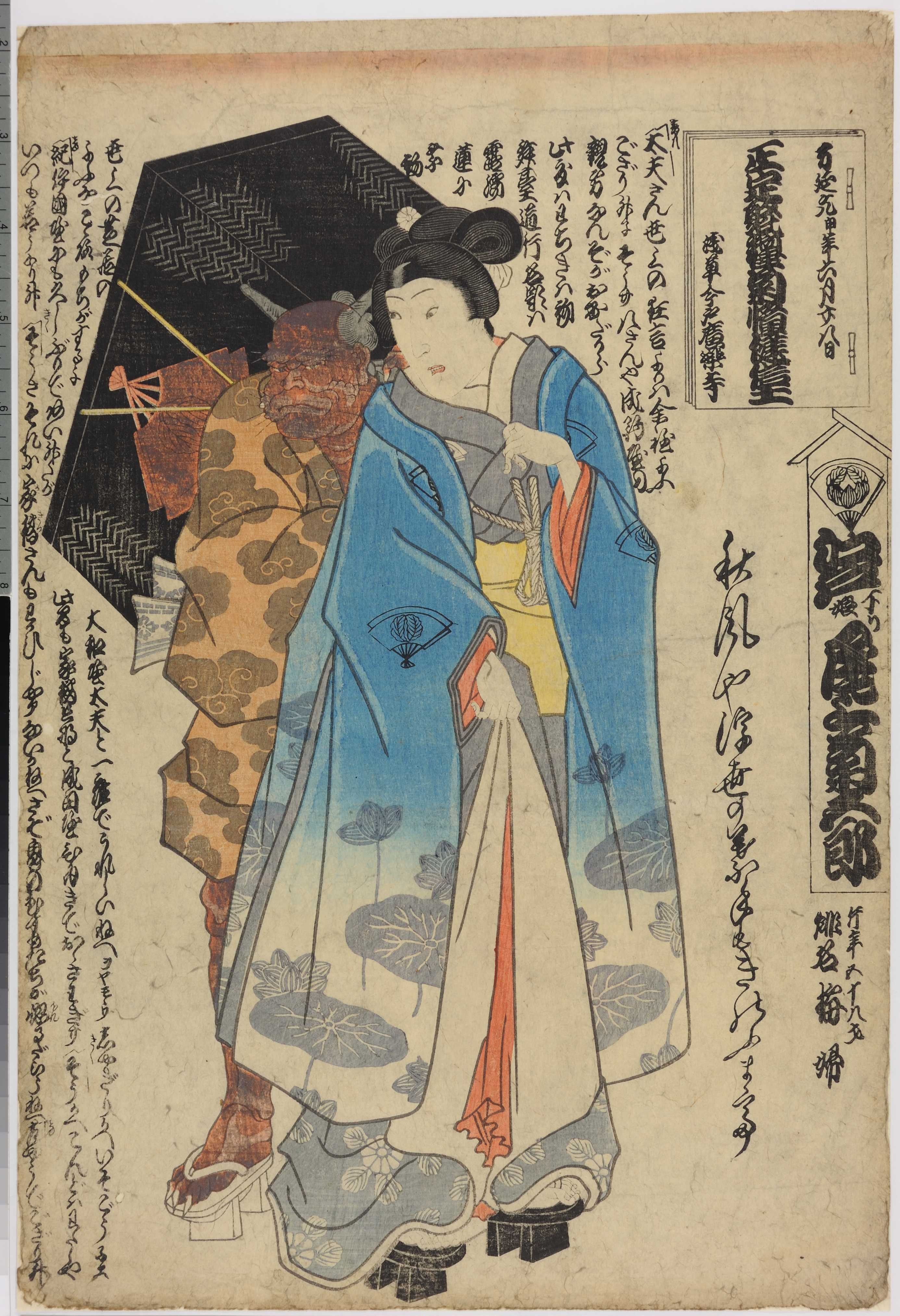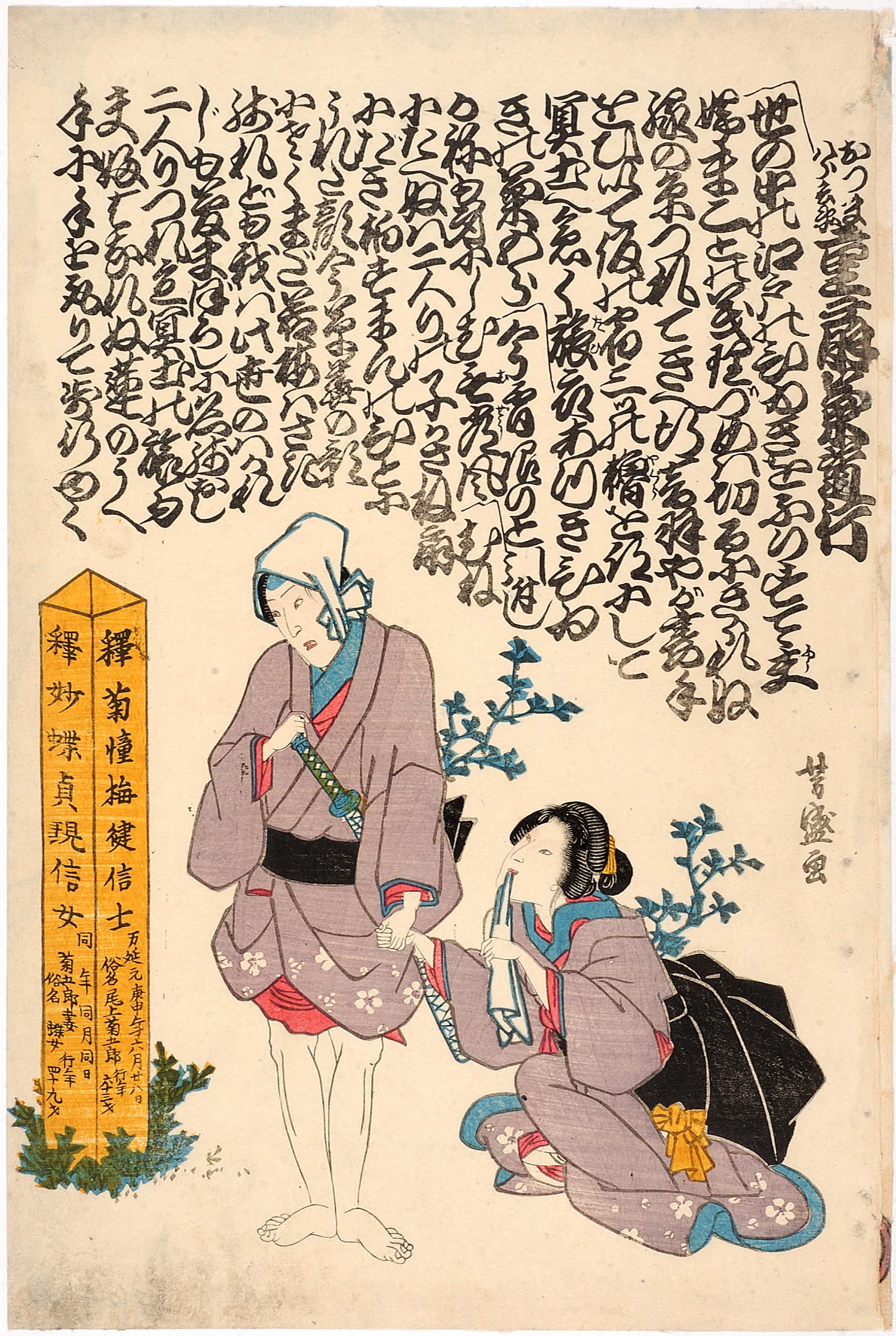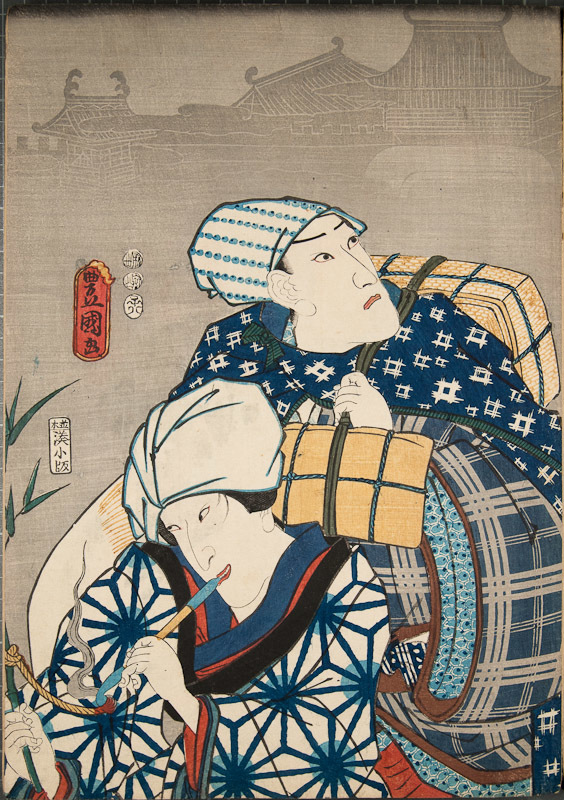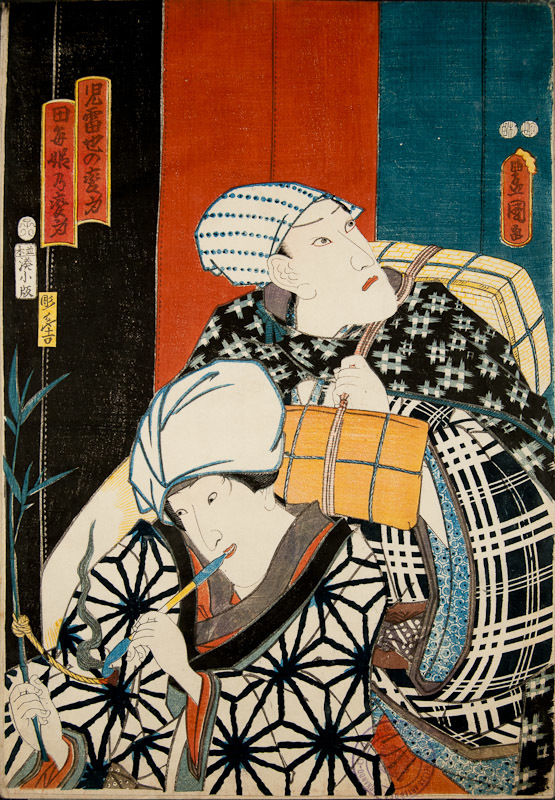Biblioteca Complutense
Next to the portrait of the deceased, it is common to find, as a reminder/news, the inscription with the date of death, age at the time of death, his posthumous Buddhist name* or kaimyô (戒名), the temple nearby the place where his ashes are buried and a memorial poem, called umeya. The term tsuizen (追 善)appears in some cases. This term refers to the Buddhist service held on the anniversary of someone's death, usually on the 1st, 7th and 13th anniversary of the decease, which seeks to secure the prayers necessary to ensure their rebirth.
* Probable reading: Saruhakuin Seihita Shinshi.
What are the main and symbolical features in a memorial portrait, shinie?
Those that made the viewer relate it to the imaginary of death configured at the time.
It is revealing that most of these elements are associated with Buddhist services.
Juzu (数珠), the Buddhist rosary, which is formed by 108 beads. The devotee uses these beads to count the mantras, prayers or invocations of the divinity’s name he is addressing.
Japanese evergreen star anise (Illicium anisatum) is often used in Buddhist memorial services and funerals in Japan. This tree has leaves that resemble lotus flowers, is aromatic and grows year-round. For these reasons, people use it as offerings to be placed on graves and it therefore helps to identify in the print that the character has passed away and that the print has been created to inform about this.
Incense burners that give off the aroma of an offering, of sacredness or of otherworldliness. In this case it is a small kōro (香炉).
The incense burner can also be of larger dimensions, like the ones we find in temples, and that can be seen here in this kind of altar dedicated to the deceased artist.
On this occasion the incense burner appears on the floor, and we can see two butterflies represented on its handles. This is a theme that also appears in the speech bubble, and that references death and rebirth in Paradise.
A low table or kyôzukue (経机), on which the sutras and incense burners are placed, often appears. Writing tools can also appear on the table. These allude to the last poem composed before the final departure.
Cherry tree flowers are common, as they are related in Japanese culture to the ephemeral nature of existence. Interestingly, the actor is holding a hand-held incense burner which he his moving around him, generating Buddhist syllables in Sanskrit.
Lotus flowers or their petals. The lotus flower grows even in murky waters and produces clean and pure flowers. They therefore symbolize enlightenment and emancipation from the mundane world. It is said that when Buddha is delighted, lotus flower petals fall from the sky. This would indicate that the actor had achieved Buddhahood in the Pure Land. In this case we see how he is fighting to free himself from a demon or oni (鬼).
The top of the print is decorated by a decorative motive that resembles a curtain formed by intertwined sutra scrolls. On the ground he seems to have prepared the luggage for his journey, with a straw hat, which is typical of pilgrims.
Cherry blossoms and sparrows appear, together with the symbol of the sutras that the actor is reading. These birds were widely represented in Japan as a good omen symbol, but in the recitation of a section of the mantra of the Wheel of the Law or Dharma there is also an allusion to sparrows. The two intertwined scrolls encourage us to think about the symbol of the Wheel of the law.
Funerary objects, such as an unlacquered tombstone (位 牌), are eloquent elements. This tombstone is replaced with a lacquered one when the 49-day mourning period is over. Then the kaimyô (the deceased’s new Buddhist name) engraved on the tablet, indicated to viewers that the actor had passed away and a funeral had already been held.
A stele or funerary pillar also often indicated the death of the actors
Jisei (辞世) is the “poem of the farewell to life”. These poems were written by literate people just before their death. One of the earliest records of jisei dates from the year 686, with the death of prince Otsu, poet and son of emperor Temmu, who was forced to commit suicide after being falsely accused of promoting a rebellion.
This actor, Ishikawa Danjurō VIII, committed suicide, so on the table in front of him we can see a dagger prepared for the moment after he finishes writing the poem.
Biblioteca Complutense
Palace of the Pure Land with a rômon (楼 門) type gate, characterized by having a single roof, which appears distant in the clouds.
This composition shows the famous pair of actors Ichikawa Danjurō VIII as Jiraiya no henshin and Bandō Shūka I as Tagoto hime no henshin. They died within a few months of each other thus, they have been represented together, as they usually appeared on stage.
Biblioteca Complutense
Shinie prints had to be on sale as soon as possible after the person’s death (within 4, 5 or 6 days), so it was quite common that publishers would hastily use woodblocks that had previously been carved for other prints, introducing some changes.
The blocks for this print were the ones used to be altered and adapted to suit their new meaning, a commemorative representation of these two actors.
